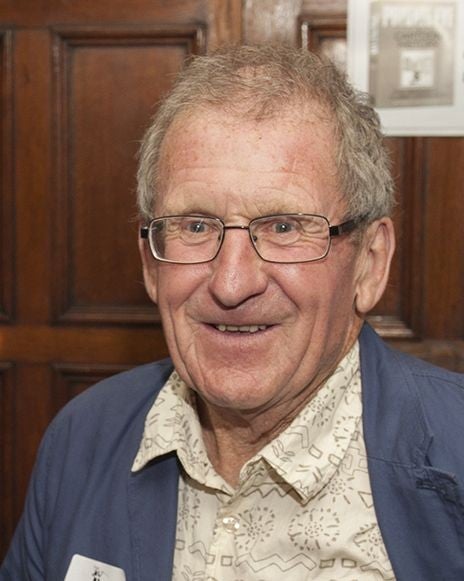Martin Honeysett: Cartoonist whose style and biting sense of humour graced British publications for more than four decades

Your support helps us to tell the story
From reproductive rights to climate change to Big Tech, The Independent is on the ground when the story is developing. Whether it's investigating the financials of Elon Musk's pro-Trump PAC or producing our latest documentary, 'The A Word', which shines a light on the American women fighting for reproductive rights, we know how important it is to parse out the facts from the messaging.
At such a critical moment in US history, we need reporters on the ground. Your donation allows us to keep sending journalists to speak to both sides of the story.
The Independent is trusted by Americans across the entire political spectrum. And unlike many other quality news outlets, we choose not to lock Americans out of our reporting and analysis with paywalls. We believe quality journalism should be available to everyone, paid for by those who can afford it.
Your support makes all the difference.Along with Sherlock Holmes and the rules of football, one of the great legacies of late Victorian Britain was the gag or joke cartoon; and the death of the well-loved cartoonist Martin Honeysett, a master of the form, may well herald the passing of an era.
In a recent essay on “The Art of the Cartoon”, John Jensen, the renowned caricaturist, remarked that although newspapers and magazines continue to publish political, social and topical cartoons, the gag cartoon is becoming an endangered species. Honeysett’s demise may well have accelerated that trend. In his heyday he was described as a “giant of British cartooning”, and his unmistakable drawing style and vicious sense of humour have graced magazines and newspapers for over four decades.
He contributed to a wide range of publications – including Punch, The New Statesman, Private Eye, The Oldie, Radio Times, The Sunday Telegraph and The Observer – and once remarked, “I try to include an element of venom and anger in my cartoons as I have always enjoyed the darker, blacker humour.” When he was asked why he drew people in such a grotesque and often cruel way, he simply replied: “That’s exactly the way they look!”
Dave Brown, the Independent cartoonist, remarked that Honeysett’s “peerless gag cartoons were populated by a cast of characters who all seemed to share, both in their clothes and their faces, the same heavily creased and lived-in look; they were down at heel and down in the mouth. Martin’s vibrant, spiky line was perfectly suited to these wry, sharply observed satires of the absurdities of modern life. Although his humour was often dark and mordant, he was a warm and affable man himself and always superb company – but most importantly, whether as a person or a cartoonist, he was just extremely bloody funny.”
Born in Hereford, Honeysett attended Selhurst Grammar School and Croydon School of Art. He then worked briefly in a London animation studio before emigrating, in 1962, to New Zealand and then Canada, where he worked as a stagehand for a ballet company and as a lumberjack, among other things. When he returned to England in 1968 he did a stint as a bus driver for London Transport while drawing cartoons in his spare time. Success arrived when he sold a cartoon to the Daily Mirror, and by 1972 his work was in sufficient demand that he was able to give up the day job.
Apart from his newspaper and magazine work, Honeysett illustrated several books for adults and children, including Sue Townsend’s The Queen and I; Dick King-Smith’s H Prince and Farmer Bungle Forgets; Bert Fegg’s Nasty book for Boys and Girls by Terry Jones and Michael Palin; and a series of poetry book illustrations for the humorist Ivor Cutler. Additionally, he published several collections of his own cartoons, including Microphobia: How to Survive Your Computer, Fit for Nothing, The Joy of Headaches: How to Survive the Sexual Revolution, Animal Nonsense Rhymes and The Best of Honeysett.
Honeysett won numerous international awards at cartoon festivals, including in Japan, where in 2005 he was made a visiting professor of cartooning at Kyoto Seika University. Examples of his work are held in a variety of public collections, including at the V&A, the Cartoon Museum and the British Cartoon Archive in Canterbury. Chris Beetles has often included Honeysett in his annual Illustrators exhibition.
His death from septicaemia was a shock to all as he was a fit man who led a surprisingly abstemious life. He will be sadly missed, but fortunately his many cartoons will live on to amuse (or haunt) us, for many years to come. He is survived by his children, Dominic and Sophie, and by his partner of 19 years, Penny Precious.
Martin Honeysett, cartoonist and illustrator: born Hereford 20 May 1943; married 1970 Maureen Lonergan (divorced 1988; one son, one daughter); died Hastings, East Sussex 20 January 2015.
Join our commenting forum
Join thought-provoking conversations, follow other Independent readers and see their replies
Comments